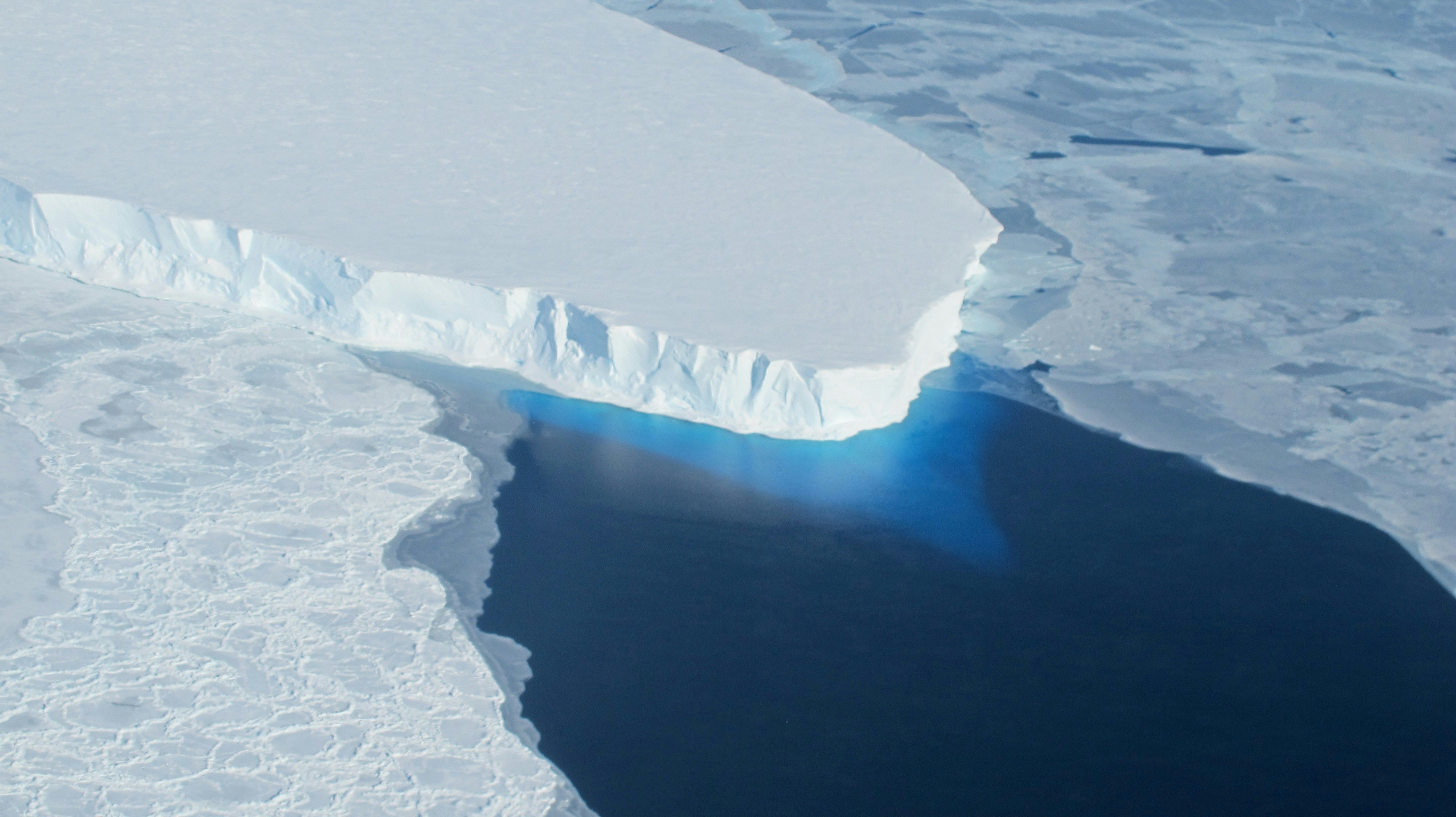
The world’s widest glacier isn’t as grounded as scientists once thought. Relatively warm seawater is rushing underneath Antarctica's Thwaites Glacier, contributing to rapid melting and global sea level rise, according to a study published May 20 in the journal Proceedings of the National Academy of Sciences.
The shifting mass of ancient frozen ice, larger in area than Florida, is sometimes called the Doomsday Glacier, because of its potential to contribute to rising tides worldwide. Thwaites itself holds enough water volume to raise sea levels by about two feet, which is enough on its own to impact millions of people living in coastal areas around the globe. Then, there’s the additional interior ice of the West Antarctic shelf where melting would rapidly accelerate with the loss of Thwaites Glacier — eventually leading to an additional estimated eight feet of sea level rise over the course of centuries, according to previous research.
Scientists have known that Thwaites has been in retreat for decades. But actual melt has outpaced many of the model projections, and now contributes to around 4 percent of global sea level rise annually. The new observations of seawater intrusion could help explain why the critical glacier is disappearing faster than expected.
Radar data collected daily between March and June 2023 by Finland’s ICEYE commercial satellite program shows that the border between the portion of Thwaites Glacier floating on water and resting on the seafloor fluctuates with the tides. This transition boundary, usually known as the “grounding line” is actually more of a grounding zone, write the authors, wider than 3.7 miles at its maximum. And movement of the glacier with the tides is forcing seawater beneath the icy behemoth, up to an additional 3.7 miles past that grounding zone, trapping some of that water in cavities and depressions.
The intruding salty seawater is many degrees warmer than glacial ice’s freezing point, especially under pressure at ocean depths. So, where Thwaites’ deepwater ice is in contact with liquid seawater, melting speeds up significantly. “The results call into question the traditional approach of modeling,” write the study researchers. The newly observed seawater intrusions “will induce vigorous melt…making the glacier more vulnerable to ocean warming, and increasing the projections of ice mass loss,” they add.
“The worry is that we are underestimating the speed that the glacier is changing, which would be devastating for coastal communities around the world,” said study co-author Christine Dow, a glaciologist at the University of Waterloo, in a press statement. Thwaites is currently anchored in place by two seafloor ridges, separated by about 8 miles. The Earth scientists and glaciologists behind the new study forecast that the glacier could retreat past that first shelf within “the next few years,” and from there melting could accelerate even further because of the seafloor’s topography. The second ridge could be overtaken by glacial retreat in another 10 to 20 years. “The future of Thwaites — and other Antarctic glaciers — will hinge on how fast warm waters erode [the ice],” the authors write. Everywhere it’s happening, unforeseen seawater intrusion will likely lead to glacier loss “much faster than anticipated by current models,” the study notes.
More research and seafloor mapping is needed to fully understand the rate of Antarctic glacial retreat. Though the findings are likely to be grim, the silver lining is that knowing more about seawater intrusion and other melt-inducing processes means scientists can improve future models. The better scientists’ projections, the more prepared humanity can be.







